From the first time I read “Chomp” – one of Greg John’s whimsical and wise stories – I was hooked! In each of his stories, Greg magically captures his young students’ view of the world, giving us insights into their hopes, fears, imagination and dreams. His stories encourage us to see kids as kids and remember what it was like to be their age. He briefly enters into the stories pondering what it all means and what he, as the principal, should do. He doesn’t always know, but we are always richer for the story and his reflections. On top of this, his stories are a delight to read. They will make you smile and nod knowing he got it just right.
We thought his stories would be a wonderful resource and a much needed breath of fresh air for us all, so we asked him to be a regular contributor to the blog. He agreed! So once a month, we will feature one of Greg’s stories and reflections.
If you’re hungry for more, you’re in luck! Greg has a new book out, 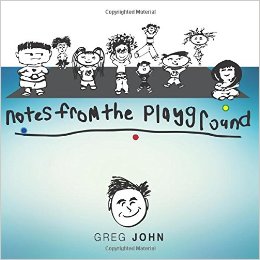 Notes from the Playground, and he has posted additional stories on his Notes from the Playground website (see more on this below).
Notes from the Playground, and he has posted additional stories on his Notes from the Playground website (see more on this below).
But for now, here’s Greg!
Greg John: I have this hunch that everything that happens on the playground is a microcosm for all that happens on the world’s stage. As above, so below as they used to say.
When I watch the terrible things that are happening in the world – the killings, destruction, and spiteful things, I saw that it all starts here. We think we can squash or step away from the things that make us squirm. But as I listened to the two girls I tell of in “Forever” and I saw that they had yet to understand a core truth – there is no where to go. We have to face what angers us – to go toward it rather than away. Moving toward the ‘other’ is the shift children must master if they (and we) are to thrive in the next human chapter.
For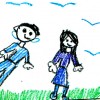 ever
ever
— Greg John, Notes from the Playground
When Karina and Grace got into it yesterday morning, they did not know that I stood near enough to hear every word. It started with a typical litany of grievances, infractions, betrayals, and spite delivered with a hiss. The first barrage came from Karina. Then, with a stammer, from Grace. Then back to the top.
Their spat ramped up with speed and force, causing Karina’s long black braids to swing in vertical arcs while Grace’s soft brown cheeks turned to mottled red. It seemed I had discovered the ‘throw-down corner’ where the real action happened!
Just then, I saw Karina’s eyes widen as she told Grace she would no longer be her best friend. The likely “I-hate-you’s” and maybe something worse appeared imminent, so I emerged from the my doorway perch and “loomed” as one of my fourth graders called it – wherein I tower over little ones and fix my gaze upon them.
“How are things going, girls?”
My first question got no response, but both girls froze, looked up at me and then at each other. I didn’t have a plan past the shock-and-awe greeting, so I had to think fast. I tried a second question:
“Friends today, gone tomorrow?”
“What do you mean?” I heard one or the other say. I stepped closer.
I found myself questioning what I wanted to accomplish by butting in. But, my gut said “continue” even as my brain failed to guide me. I knew these girls well – as if they were my own – and knew they had been friends forever. I thought of the synchronicities that would create a moment with the three of us talking to one another.
Both girls remained speechless, so I filled in the blanks with a story.
“Do you see those two trees?” In fact, two old oaks grew side by side on the other side of the chain link. What luck! Come on. I said to myself. Spin it! And the words came: “They are the oldest living beings on this hill. Some say they are more than 500 years old. When no water comes, when the heat spikes, you name it, they stick together. And every year they inch closer to each other. If you look at their roots, they have even started to grow together. And you know what else?”
I got an eye roll from Grace, but I kept talking: “I believe that trees can talk.”
“Oh come on!” Karina cut in.
“Not in words like you and me. They speak the way trees speak. They were saplings and then proud trees, standing even when other trees around them bent and fell. They bent with the wind and they grew closer.”
“So what did the trees say?” Now it was Grace being suspicious.
“You see that tree on the left? The bigger one? That one does most of the talking. So the big one said to the little one: “I am never going to leave you. We’ve been through too much.”
“Oh come on” said Karina again. “These trees got nowhere else to go.”
“Well look around, little angel. Neither do you. Figure out how to make it work. Both of you could use a good friend. . .”
That wrapped things up for the moment. Meanwhile, I noted that we stood upon a slab of solid tar, surrounded by a high fence, and filled with little humans who shadow-boxed with their own forms of “looming”. They toyed with the awesome power of choice and the irrevocable ways of consequence.
Good enough reason to choose in, every single day.
 Greg John has served for more than two and a half decades in public education. He is an elementary school principal in San Francisco where he works to support new leaders in their common quest to build schools that are child-centered. His guiding maxim is that story telling is a human right. Notes from the Playground documents how childhood experiences – especially those that happen on the blacktop – shape who we become. For more information, contact Greg John at rgregoryjohn@gmail.com or visit his website.
Greg John has served for more than two and a half decades in public education. He is an elementary school principal in San Francisco where he works to support new leaders in their common quest to build schools that are child-centered. His guiding maxim is that story telling is a human right. Notes from the Playground documents how childhood experiences – especially those that happen on the blacktop – shape who we become. For more information, contact Greg John at rgregoryjohn@gmail.com or visit his website. 
Greg John’s reflection of Theodore Roethke’s “The Waking” is in Teaching with Heart.
Published on December 17, 2015Author Megan ScribnerCategories Uncategorized
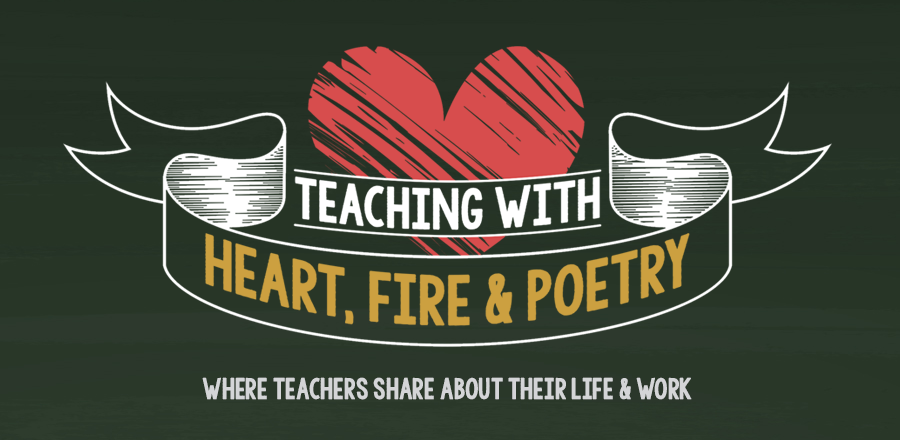



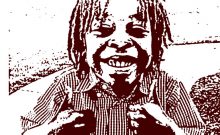

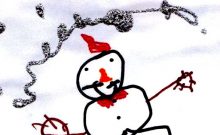
Leave a Comment